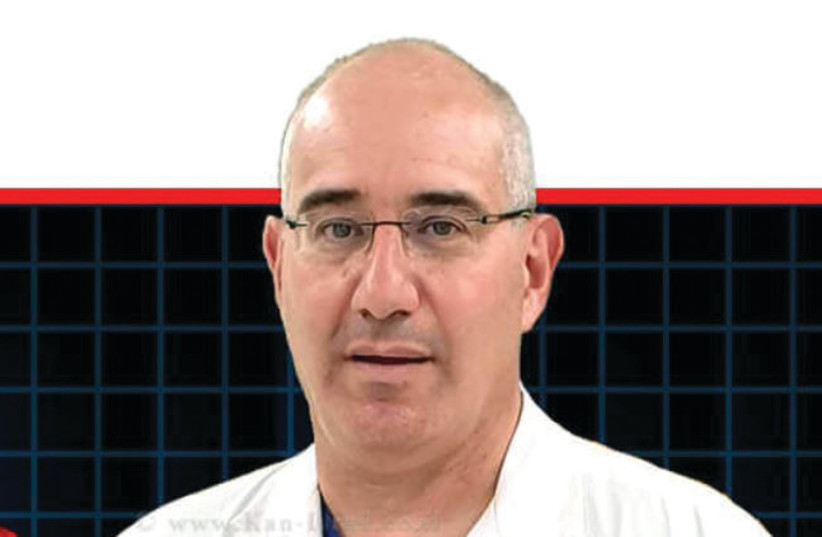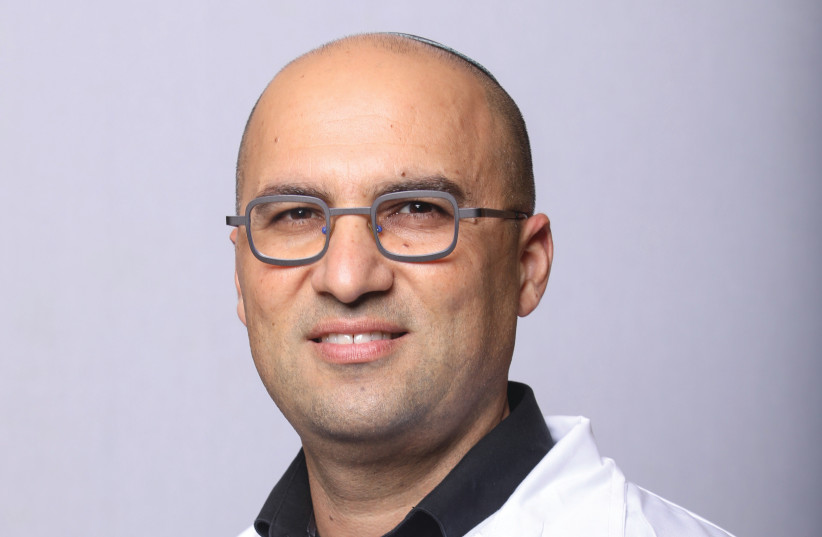The tragic death of Arik Einstein, the iconic Israeli singer in 2013 from a ruptured abdominal aortic aneurysm (AAA), focused the interest of the Israeli population on this disease.
What is an aneurysm? It is a condition in which the arterial wall weakens, and the artery enlarges to a diameter that is more than one and a half times its normal diameter. The elastic fibers within the arterial wall degenerate, primarily due to smoking. As a result, the arterial wall loses its ability to contract and return to the standard arterial diameter.
The aorta is the most common artery affected by these changes. The aorta, the main artery in the body, begins at the heart and ends in the pelvis, where it divides into the two arteries that reach the legs. The standard aortic diameter is 20 mm. An abdominal aortic aneurysm is an aorta with a diameter of more than 30 mm.
Diagnosis of an aneurysm is essential to prevent a catastrophic rupture event, which may result in the patient's death due to uncontrolled bleeding into the abdomen.
The natural history of the female aneurysmatic disease has not been addressed thus far, and there is no consensus regarding the proper treatment indications. Should treatment for females be identical to treatment for males? Is there a difference in natural history and as a consequence in the treatment indication?

Women with a history of smoking suffer aneurysms at a rate ten times higher than women who have never smoked. This incidence is seventy times higher among actively smoking women compared to women with no smoking history.
The history of females with large aneurysms is worse than males since the aneurysm diagnosis is made at an older age when the disease has progressed, and the diameter is more extensive. The larger diameter increases the risk of rupture, and the option of minimally invasive, endovascular treatment becomes quite difficult.
The accepted indication for treating an abdominal aortic aneurism is a diameter of more than 55 mm. This indication is based on studies conducted in large male populations because the disease prevalence is four times higher among males than females.
When the 55 mm diameter rule for intervention is applied to women, the anatomical characteristics of the aneurysm prevent simple endovascular treatment. Using male rules for intervention to females makes the treatment much more complicated and has higher morbidity and mortality rates.
The rupture risk of an aneurysm whose diameter is 45 mm in females equals the rupture risk of an aneurysm of 55 mm in males. This data has led to the creation of a "rule of thumb" in which 10 mm is added to the diameter measured in a female's aneurysm to estimate the rupture risk according to the currently known tables, which are male-based.

The current approach, which does not consider gender, should be changed, and different intervention guidelines should be established for women and men. Women should be treated earlier, with a smaller abdominal aortic diameter.
Further studies should be conducted to evaluate the risk of rupture among females. Those studies may change the current aneurysm screening guidelines, which only refer to males ages 65 and up with a smoking history. It seems that females with a smoking history should be screened and treated, if necessary, at an earlier stage.
Gender seems to play a significant role in this disease progression and should be addressed as such. Applying those new concepts would surely save many lives.
We recommend that women who smoke and have high blood pressure should see their doctors for regular checkups to evaluate their risk for abdominal aneurysm.
Eitan Heldenberg is the head of the Department of Vascular and Endovascular surgery in Hillel Yaffe Medical center.
Zalman Itzhakov is the head of the Imaging Department in Wolfson Medical Center. Interventional Radiologist In Assuta Ramat Hahayal center
